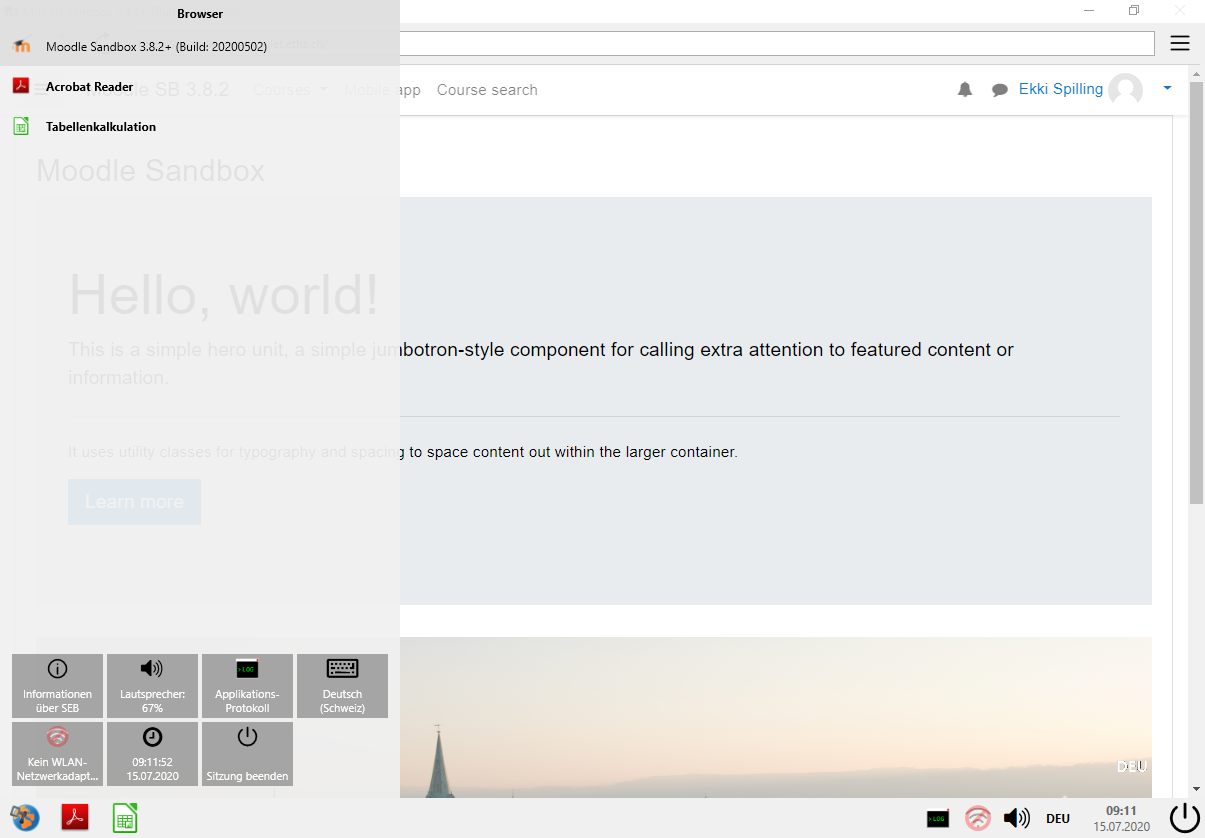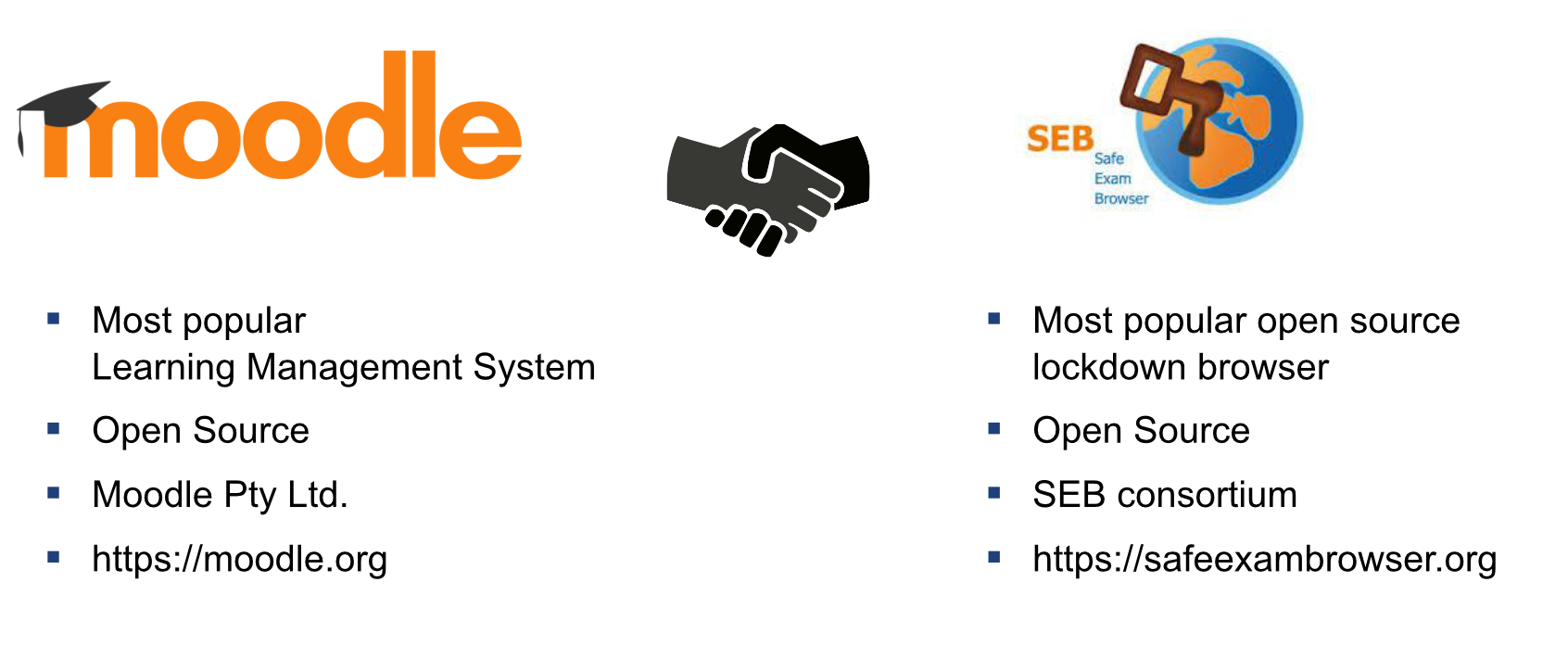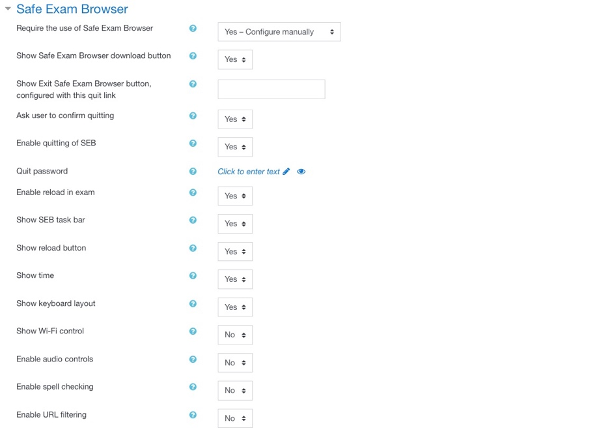Safe Exam Browser 3.0 freigegeben
Prüfungen am Computer (Online-Prüfungen) bieten viele Vorteile gegenüber herkömmlichen schriftlichen Prüfungen. Sie können oftmals authentischer gestaltet werden, indem Studierende in der Prüfung mit Programmen und Ressourcen arbeiten können, die sie auch in den Übungen oder später im Arbeitsalltag verwenden (z.B. durch eine eingebettete Programmierumgebung). Je nach Aufbau der Prüfung ist auch eine (teil-)automatisierte Bewertung möglich, die bei grossen Kursen eine massive Arbeitserleichterung für die Examinatoren bringt, bzw. ein Assessment überhaupt erst möglich macht (z.B. bei MOOCs).
Voraussetzung für Online-Prüfungen ist eine abgesicherte Umgebung am Prüfungscomputer, die während der Prüfung nur den Zugriff auf erlaubte Ressourcen gestattet. Hier kommt die Open Source Software Safe Exam Browser ins Spiel, die seit über 10 Jahren existiert und inzwischen international von zahlreichen Bildungseinrichtungen eingesetzt wird. Der Safe Exam Browser ermöglicht nicht nur die kontrollierte Absicherung des Prüfungscomputers, sondern erlaubt auch das Verwenden ausgewählter lokaler Programme oder die Freigabe von bestimmten Webressourcen.
Für die Version 3 wurde der Safe Exam Browser (im Folgenden SEB abgekürzt) einem umfassenden Refactoring unterzogen. Der SEB wurde von Grund auf gemäss aktueller Standards neu programmiert. Die prinzipielle Funktionsweise wurde dabei beibehalten. Wesentliche Änderungen wurden «unter der Haube» vorgenommen und sind vor allem technischer Art.
So wird nun beispielsweise als Browser-Komponente anstelle der Mozilla Gecko Engine die Chromium Engine verwendet. Die Erkennung von virtuellen Maschinen als Laufzeitumgebung wurde verbessert. Es gibt erweiterte Funktionen zur Kontrolle der Browser-Session durch das Prüfungssystem (für die SEB-Moodle Deeper Integration). Und die Zusammenarbeit mit Antivirenprogrammen wurde weiter verbessert.
Aber auch die Benutzeroberfläche wurde modernisiert. Neu verfügt SEB über ein «Action Center», ähnlich dem aus Windows 10 bekannten Seitenmenü. Man kann nun beim Umschalten zwischen geöffneten Applikationsfenstern mit ALT-TAB wie unter Windows üblich kleine Vorschaufenster der geöffneten Applikationen sehen. Ausserdem wird die Arbeit mit Tablet-PCs besser unterstützt.

SEB wird weiterhin in Versionen für Windows, MacOS und iOS angeboten. Und mittlerweile wird für Windows neben der 32-bit auch eine native 64-bit Variante bereit gestellt.
Der volle Funktionsumfang aus SEB 2.4.x wird mit der Version 3.2 zur Verfügung stehen. Dies betrifft etwa den Zugriff auf die Webcam durch Webapplikationen (mehr Details dazu in den Release Notes).
Zudem sieht die Roadmap für die Weiterentwicklung von SEB vor, das mitgelieferte Konfigurationstool in Übereinstimmung mit dem Konfigurationstool des SEB Server zu überarbeiten, sowie die Integration mit weiteren Learning Management Systemen zu verbessern.



